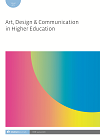
Full text loading...

This practice-based research project involved creating and using a set of teaching resources to engage undergraduate art and design students with plants. The resources addressed learner preferences for engaging with different modes of representations and involved three types of visual encounters with plants. Students engaged with realistic representations, botanically accurate illustrations and actual plants themselves. The use of these resources drew attention to the distinction between botanical and artistic understandings of plants and highlighted the relevance of considering multiple modes of engagements while designing pedagogical initiatives to study plants through art and design.

Article metrics loading...

Full text loading...
References


Data & Media loading...

Publication Date:
https://doi.org/10.1386/adch_00039_1 Published content will be available immediately after check-out or when it is released in case of a pre-order. Please make sure to be logged in to see all available purchase options.